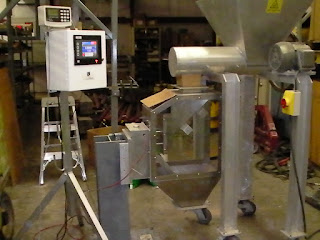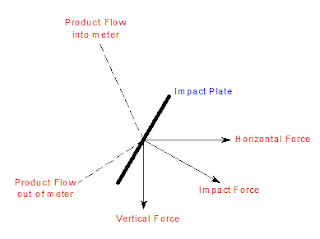Choosing a Solids Flow Meter - When is testing is needed?
Not all Solids Mass Flow Meters are created equally, so how do you know which meter is best suited to measure your product???
When asking this question, the best answer is, when in doubt, test some product! Most manufacturers of mass flow meters should have a test lab and a list of products that they have tested with their devices, building a database of what works and what does not work.
When looking at the testing option, the first place to look is the website of the manufacturer to see if they have a list or database of tested products. The more products tested, the more they will know about different product characteristics and therefore the more they know about how their flow meter will perform. Videos, test reports, and general product knowledge are all keys to a successful installation of a solids flow meter.
For more information about the Product Testing Capabilities, Material Test Reports, Product Test Videos, or the CentriFlow Solids Mass Flow Meter, visit our site at easterninstruments.com, call us at 910-392-2490, or email us at sales@easterninstruments.com today!
When asking this question, the best answer is, when in doubt, test some product! Most manufacturers of mass flow meters should have a test lab and a list of products that they have tested with their devices, building a database of what works and what does not work.
WHAT TO LOOK FOR WHEN EXPLORING
THE TESTING OPTION?
- REPLICATE THE INSTALLATION - Testing a product sample should also be done in a way that replicates the application or installation location. This means that the equipment being used for testing should be similar to that of what will be used in the field. For example, if the application calls for a flow meter (flowmeter) to be installed under the discharge of a screw conveyor, then the testing lab should have a screw conveyor.
 |
| Simulation of Screw Conveyor Feeding a CentriFlow Type II Meter |
 |
| Simulation of Belt Feeding a CentriFlow LDM Meter |
- REPLICATE THE APPLICATION PARAMETERS - The testing lab should test the product such that it will be in the field, meaning that if the product temperature is elevated or cooled, then there should be some way to simulate that in the test lab. The flow rate or a mathematical equivalent of that flow rate should be used as well. This way the best simulation of the actual application or installation is replicated. Nothing is worse than getting a test done in the lab, only to find out that since it was not replicated to the field parameters, that the meter will not work correctly after it has been installed.
Replication of Flow Rate through CentriFlow Meter
- PREPARE A TEST REPORT - The testing lab should provide a completed test report, noting how the test was completed, the product tested, the equipment used, and showing the results of the test. The goal of testing is finding out if the flow meter is the right piece of equipment for the product, so the test report should reflect this and should be able to be used to replicate the testing.
 |
| Sample Material Test Report for Corn Germ in a CentriFlow Type II Meter |
- THE LITTLE EXTRAS - With plant personnel being so busy these days, the test lab should be able to provide those little extras that today's technology provides. For example, since it is difficult to be able to visit a manufacturer's site to see a test first hand, the test lab should provide a downloadable link to a video of the testing or be able to use some online meeting software to provide a window to the testing.
When looking at the testing option, the first place to look is the website of the manufacturer to see if they have a list or database of tested products. The more products tested, the more they will know about different product characteristics and therefore the more they know about how their flow meter will perform. Videos, test reports, and general product knowledge are all keys to a successful installation of a solids flow meter.
For more information about the Product Testing Capabilities, Material Test Reports, Product Test Videos, or the CentriFlow Solids Mass Flow Meter, visit our site at easterninstruments.com, call us at 910-392-2490, or email us at sales@easterninstruments.com today!



